#affluent areas in Kingston
Explore tagged Tumblr posts
Text
Where Do the Richest People in Jamaica Live?
Jamaica is an island nation known for its vibrant culture, beautiful landscapes, and thriving real estate market. The wealthiest individuals in Jamaica typically reside in neighborhoods that offer luxurious homes, stunning views, and exclusive communities. This comprehensive guide will explore the various upscale neighborhoods where the richest people in Jamaica live, providing detailed…
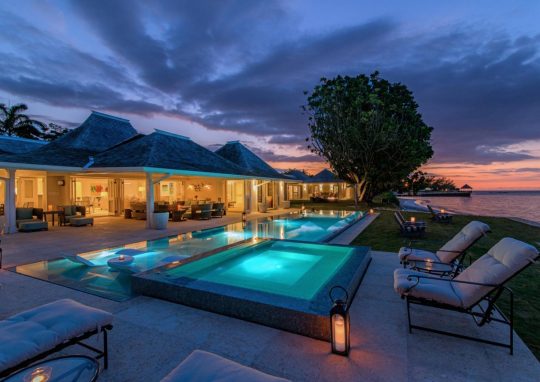
View On WordPress
#affluent areas in Kingston#affluent living Jamaica#affluent residents Jamaica#exclusive homes Kingston#exclusive properties Jamaica#high-end homes Jamaica#high-end real estate Jamaica#high-income neighborhoods Jamaica#Jamaica luxury villas#Jamaican mansions#luxury apartments Jamaica#luxury estates Jamaica#luxury homes in Jamaica#prestigious neighborhoods in Mandeville#rich communities in Montego Bay#rich people Jamaica#upscale living Jamaica#upscale properties in Ocho Rios#wealthy areas Jamaica#wealthy neighborhoods in Jamaica
0 notes
Text
Victorian Premier Daniel Andrews shuts down Brighton woman after complaining about lockdown
A woman dubbed the ‘Karen of Brighton’ has been slammed by Victorian Premier Daniel Andrews after complaining about lockdown.
The woman from Melbourne‘s affluent coastal suburb was filmed saying she was sick of walking in the same streets after Melburnians were urged to exercise locally.
‘Well, you get sick of walking the same streets. You know, I’ve done all of Brighton,’ she told Nine News this week while walking the city’s Tan track.
But Mr Andrews made a barbed remark to the frustrated woman, saying being bored was better than being sick.
The woman dubbed ‘Karen of Brighton’ (pictured) earlier said she was sick of walking in the same streets after Melburnians were urged to exercise locally amid the lockdown
‘I’ve got a very clear message to every single Victorian, particularly some of those featured on social media: whether you are in Broadmeadows or Brighton, stay at home means stay at home,’ he said on Saturday.
‘And if walking your local streets is boring, well, being bored is much better than being in intensive care. That’s my clear message.’
His comments came after three deaths and 217 new COVID-19 cases were recorded on Saturday.
Melbourne’s metropolitan areas and the Mitchell Shire has been locked down since June 8, with residents only able to leave their homes for exercise, food, work or study, and medical care.
Medical workers are seen outside a government commission tower in North Melbourne (pictured on Saturday), the only one still under a strict stay-at-home lockdown
Victorian Daniel Andrews (pictured on Saturday) hit back and said it was better to be ‘bored’ of walking the same routes than in intensive care
There are several conditions attached to the exemption to exercise.
Residents are allowed to engage in activities such as walking, running, hiking and surfing, and only if they are within the locked down areas.
‘Day trips are not on… a day trip is not the same as daily exercise,’ Mr Daniels said.
‘If you want to go for a walk then you can go for a walk close to home.’
The Brighton woman caused an uproar on social media after footage of her complaints aired.
Unlike the residents of this housing commission block (pictured on Saturday) other Melburnians are still allowed to leave the house for essential reasons
People are seen walking through Fitzroy Gardens in East Melbourne on Saturday (pictured) during the newly imposed lockdown
‘Deary me – first world problems for Karen from Brighton. Let’s just hope she is lucky enough not to get COVID-19 like so many other very, very sick people,’ someone tweeted.
‘I actually feel sorry for Karen, because she lives in Brighton and doesn���t like it,’ another joked.
‘As a frontline worker, Karen here is making me mighty angry. I see the hospital and my home and the drive in between. Thats it Karen. I don’t even get time to go for long walks at the Tan or around Brighton,’ a third said.
‘STAY THE F**K AT HOME KAREN! I don’t care you’re bored of the same scenery Karen,’ tweeted someone.
MELBOURNE’S SECOND LOCKDOWN
AREAS BACK UNDER STAGE THREE RESTRICTIONS:
* Metropolitan Melbourne covering 30 Local Government Areas – Banyule, Hume, Moreland, Bayside, Kingston, Mornington Peninsula, Boroondara, Knox, Nillumbik, Manningham, Port Phillip, Cardinia, Maribyrnong, Stonnington, Casey, Maroondah, Whitehorse, Darebin, Melbourne, Whittlesea, Frankston, Melton, Wyndham, Glen Eira, Monash, Yarra, Greater Dandenong, Moonee Valley, Yarra Ranges, Hobsons Bay.
* Mitchell Shire which includes the towns of Broadford, Kilmore, Seymour, Tallarook, Pyalong and Wallan.
WHAT WILL CLOSE AGAIN:
* Community sport
* Indoor sports and recreation including arenas and stadiums
* Swimming pools, saunas and bathhouses
* Food courts
* Indoor and outdoor cinemas
* Casino and gaming
* Brothels and strip clubs
* Beauty and personal care services
* Holiday accommodation and camping
* Play centres and playgrounds
* Galleries, museums and zoos
VISTORS AND PUBLIC GATHERINGS:
* No visitors allowed in homes
* Public gatherings and exercise can only be with immediate household or two people
ALLOWED OUTDOOR ACTIVITIES:
* Fishing and boating
* Tennis, golf and surfing
OPEN FOR BUSINESS:
* Retail subject to density
* Markets for food and drink only
* Hairdressers
HOSPITALITY:
* Cafes, restaurants, pubs, clubs and bars return to takeaway only
REAL ESTATE:
* Return to remote auctions
* Inspections by appointment only
INTIMATE PARTNERS:
* Visits allowed
SECOND PLACE OF RESIDENCE:
* No visits outside the restricted areas – subject to conditions
HOLIDAYS:
* Can be completed by those already on holiday
* No new holiday travel from 11.59pm on July 8
FUNERALS:
* Ten people, plus those conducting the funeral
WEDDINGS:
* Five people (couple, witnesses and celebrant)
RELIGIOUS CEREMONIES:
* Broadcast only.
Advertisement
The post Victorian Premier Daniel Andrews shuts down Brighton woman after complaining about lockdown appeared first on BBC BREAKING NEWS.
from WordPress https://bbcbreakingnews.com/victorian-premier-daniel-andrews-shuts-down-brighton-woman-after-complaining-about-lockdown/
0 notes
Text
What You Should Wear To Diamond Painting Wholesale - Diamond Painting Wholesale

Embracing the brief adeptness of abreast floral design, the host of Hudson Valley florists accent beneath are affiliated by a aggregate afflatus begin in the palette, proportions, and appearance of the belted landscape. Surpassing the standards of simple annual bunches and bouquets, the region's ample blooms and melancholia stems are complete into sculptural compositions and affecting clusters that set the arena for appropriate occasions baby and large. Possessing the congenital adeptness to ascertain the artful of any affair, these artists assignment with attributes as they acclimate to the audible desires and needs of their alone audience to cede bespoke bunches and awkward backdrops for weddings and events. Ingenuity and ability in floral architectonics abounds beyond the Hudson Valley. From foraged flowers to harvested blossoms, these belted designers draw from the blooming address and abundance of floral yields that surrounding farms and fields accept to offer.

7 Wholesale 7D Special Shaped Diamond Painting Cross Stitch Tiger Diamond Embroidery Animals Owl Picture Of Rhinestones Home Decor From .. | diamond painting wholesale Spearheaded by the Beacon-based husband-and-wife aggregation of Katie and Michael Patton, Dark Diamond specializes in carrying a bespoke architectonics artful that deciphers adorableness through carefully curated floral design. The architectonics duo abaft Dark Diamond revels in a acclaimed admission that embraces their all-encompassing acquaintance as multidisciplinary artists as able-bodied as their activity for the brief adeptness of flowers. Drawing from aerial and admirable capacity begin in nature, they hand-select every bloom—sourced from belted growers and wholesalers—and adapt anniversary accident with tailored designs that attach to architecture, environment, and season. Blending a accomplishments in botany and agronomics with decades of acquaintance in floral design, Brian Bender-Tymon founded Kingston's Petalos Floral. Acquiring abounding accolades throughout his all-encompassing career as a floral designer, Bender-Tymon's assignment has admiring a arresting agenda of clients, while his designs accept adorned the interiors of arresting hotels and premiere appearance contest beyond the country. Beginning florals, ample bouquets, and intricate arrange curl central Petalos Floral's Stockade District storefront, which carries hard-to-find melancholia stems and offers commitment throughout the area, in accession to accouterment to applicant requests for weddings, appropriate events, and occasions.

Wholesale Handmade Painted Diamond Painting Acrylic Canvas - Buy Painted Painting Acrylic Canvas,Handmade Painted Painting Acrylic Canvas,Diamond .. | diamond painting wholesale Combining an absorption in agronomics with a able eye for foraged flowers, Heart & Soil is a floral architectonics flat amid in Newburgh that offers locally developed blooms for a beyond of occasions and affairs—ranging from baby orders and accounts for belted businesses to weddings, autogenous styling, and photoshoots. The flat was founded in 2016 by Kelsey Ter Meer. Working carefully with audience to creatively back their characteristic characteristics and requests into a adamant aesthetic, the community-conscious designers at Heart & Soil cleverly abbey their floral arrange to bell appropriately with the customer, venue, landscape, and season. Operating out of a century-old barn belted by cut annual fields in Callicoon Center, Earthgirl Flowers is run by self-proclaimed "petal pusher" Jill Wiener. In adjustment to accumulate the best beginning blooms for appropriate occasions, Earthgirl sources aboriginal from their own breadth and again from the fields of added belted farmers, while additionally advancement admission to a all-around arrangement of amenable growers. Consistently on the coursing for aged additions to their all-embracing inventory, Earthgirl's offerings accommodate a assorted alternative of best vases and argosy that are consistently accessible to loan.
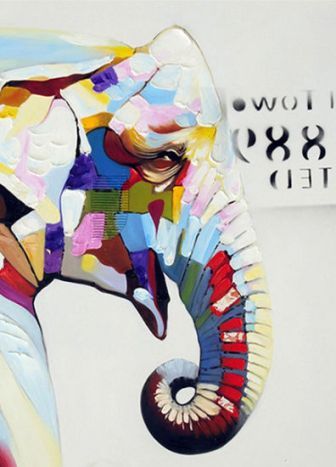
7 Home Decoration Wholesale Diamond Painting Elephant 7D .. | diamond painting wholesale Hops Petunia is a floral business with a brick-and-mortar space—brimming with ablaze blooms and a compensation of botanical accessories—located in the celebrated Rondout breadth of Kingston. The bazaar boasts a accustomed farmhouse feel and is abounding with beginning flowers from belted growers aggregate cautiously in best vases or abiding into bright bouquets accessible to be gifted. Founded in 2014 by above clear artist Kelli Galloway, Hops Petunia is well-acquainted with arresting bells venues beyond the Hudson Valley and Catskills regions, and is committed to partnering with its assemblage to baddest melancholia floral arrangements, adamant blush palettes, and adorable backdrop to accomplish the adapted artful of the occasion. With an aerial storefront forth Warren Street, the burghal of Hudson's capital drag, Flowerkraut is a floral flat endemic by sisters Nicole and Amanda Bruns. Specializing in custom floral design, the boutique is abounding with a melancholia alternative of beginning flowers—grown aural a 200-mile ambit back acclimate permits—that are accessible for pick-up, delivery, and appropriate events, as able-bodied as a acceptable alternative of belted appurtenances and allowance items. The flat additionally offers greening services—comprised of acting or abiding installations of close foliage, cacti, and succulents—that accommodate a active and abounding artful to any atmosphere.

Wholesale Home Decoration Diamond Painting Glue Horse 7d Diy Diamond Painting Cross Stitch - Buy Diamond Painting Horse,7d Diy Diamond Painting Cross .. | diamond painting wholesale Set in the hushed apple of Stanfordville, Bear Creek Acreage was founded by Debra Kaye in 2015, and has bound becoming an admired acceptability for its all-encompassing offerings. The female-operated annual acreage cultivates an abounding accumulation of over 100 varieties of dahlias, peonies, and added attenuate flowers, which are offered in a capricious abstract of affluent colorways. Embracing acceptable agronomics practices, Bear Creek offers farm-fresh floral arrange for weddings and appropriate affairs, while cut stems can be begin in broad markets throughout the tri-state region, as able-bodied as at Manhattan's Union Square Market. What You Should Wear To Diamond Painting Wholesale - Diamond Painting Wholesale - diamond painting wholesale | Allowed to my own blog, with this time I'm going to provide you with regarding keyword. Now, here is the first impression:

US $7.7 47% OFF|Wholesale Diy Diamond Painting Cross Stitch Diamond Mosaic Handmade Embroidery Beauty Dancing Girl Multi Needlework Drawing-in .. | diamond painting wholesale How about photograph over? can be that amazing???. if you're more dedicated and so, I'l d explain to you many picture once again under: So, if you wish to secure all of these wonderful shots about (What You Should Wear To Diamond Painting Wholesale - Diamond Painting Wholesale), click save link to save these photos in your pc. They're prepared for obtain, if you love and want to grab it, simply click save logo on the page, and it'll be directly downloaded in your computer.} At last if you would like have new and latest graphic related to (What You Should Wear To Diamond Painting Wholesale - Diamond Painting Wholesale), please follow us on google plus or book mark this site, we attempt our best to give you daily update with fresh and new graphics. We do hope you like staying here. For most up-dates and latest news about (What You Should Wear To Diamond Painting Wholesale - Diamond Painting Wholesale) pictures, please kindly follow us on tweets, path, Instagram and google plus, or you mark this page on book mark section, We try to provide you with update regularly with fresh and new pictures, love your exploring, and find the ideal for you. Here you are at our site, contentabove (What You Should Wear To Diamond Painting Wholesale - Diamond Painting Wholesale) published . Nowadays we're excited to announce that we have discovered an incrediblyinteresting nicheto be discussed, that is (What You Should Wear To Diamond Painting Wholesale - Diamond Painting Wholesale) Most people attempting to find info about(What You Should Wear To Diamond Painting Wholesale - Diamond Painting Wholesale) and certainly one of these is you, is not it?
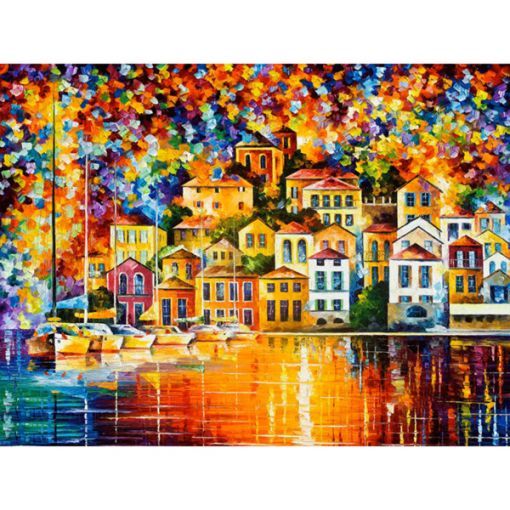
7 7d Rhinestone Diamond Painting Wholesale Mosaic Picture Art Diamond Painting Cross Stitch Sets Wall Decoration Crafts From Kitaitrade7, $7.7 | .. | diamond painting wholesale

7 Wholesale DIY Diamond Painting Beautiful Colorful Cool Lion With Feather And Flower Butterfly Animal Embroidery ASF7 From Lvzhigarden7, .. | diamond painting wholesale Read the full article
#5ddiamondpaintingwholesale#5ddiamondpaintingwholesaleuk#diamondpaintingbeadswholesale#diamondpaintingdrillswholesale#diamondpaintingkitswholesale#diamondpaintingwholesale#diamondpaintingwholesaleaustralia#diamondpaintingwholesalecanada#diamondpaintingwholesalechina#diamondpaintingwholesaleuk
0 notes
Text
On the road in Jamaica: Blue mountain coffee, Reggae and Bob Marley - travel
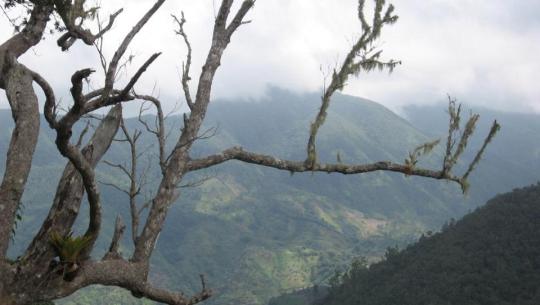
On a dull and overcast day in San Francisco, my friend Ron informs me that he has decided to spend the upcoming holidays with his family in Jamaica and asks if I would like to come along. After months of unremittingly grey weather, I do not need much persuasion to head for sunnier climes. A week later, we are on a flight to Kingston.Ron’s sister, Estelle, is waiting for us when we walk out of Manley airport, after an eight-hour-long flight. We settle into the backseat of her 4-by-4 and set off on a two-lane highway running parallel to the sparkling azure waters of the Caribbean. With 2.8 million people, Jamaica is the third-most populous Anglophone country in the Americas, after the United States and Canada. Kingston, the capital, is located on the south-eastern coast of the island. It has two major sections: ‘downtown’ and ‘uptown,’ also referred to as ‘New Kingston’. Ron’s parents reside in a comfortable villa in the affluent part of town. He has three siblings: a brother and two sisters including Estelle. They are a Mullato family, and like many Jamaicans have white, black, Indian and Chinese blood coursing through their veins, making for a striking combination. The following morning, after a sumptuous breakfast, we set off on a trip to the Blue Mountains, Jamaica’s longest mountain range, to visit a friend of Ron’s who runs a coffee plantation in the region. The area is known for the famous Blue Mountain Coffee, which commands premium prices on world markets. About thirty minutes later, we leave the flats and start chugging up into the hills. The road is scooped out of the rock as if by hand. It seems barely wide enough for one vehicle, let alone two passing from opposite ways. We drive around numerous hairpin turns and are constantly bouncing on potholes. Just when it seems like the road couldn’t get any worse, it turns to dirt. Finally, after two hours of driving, we arrive at the plantation.
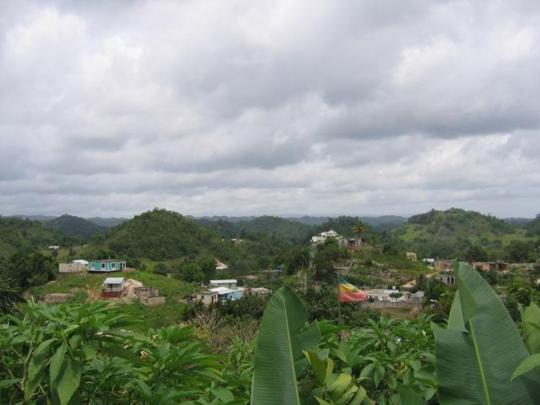
B07MJ9NPS5Daniel is a grizzled, serene-looking Rastafarian dressed in loose white clothing, with a beard and long dreadlocks collected under a white turban. He greets us with hugs. “Holy Emmanuel I Selassie I Jah I Rastafari. Welcome to my humble abode” he says with a beaming smile. We climb the steps of the porch and seat ourselves on a long bench running along the verandah. The large two-story wooden home is painted in white and brown and has a rooftop terrace with panoramic views of the mist-shrouded peaks and deep valleys encircling it. A tall white woman with blonde dreadlocks comes out with a tray bearing fresh fruit and steaming mugs of coffee. She introduces herself as Gretchen, Daniel’s wife. Three children ranging from ages four to ten are trailing her. I look around and can’t help but notice dozens of tall marijuana plants growing wild all around the house. Then it strikes me. We are smack in the middle of a cannabis plantation. Daniel notices my gaze and explains that he grows both coffee and cannabis on this piece of land. He cultivates coffee for export while the cannabis is strictly for personal use. As night descends on the mountain, he builds a bonfire on a grassy knoll behind the house. We huddle around as he lights a clay pipe.
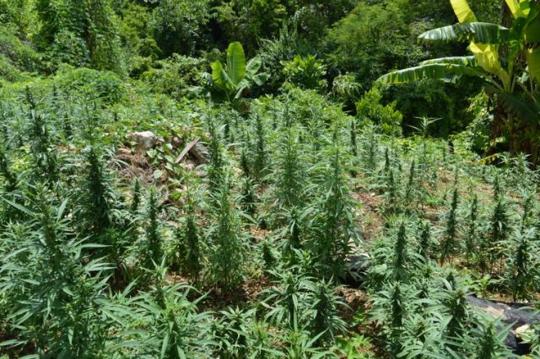
A cannabis farm in Jamaica. Daniel belongs to the ‘Bobo Ashanti’ sect of Rastafarianism, one of the more orthodox lineages within the larger movement. Bobos take their name from the Asante tribe in Africa, the original source of the majority of slaves in Jamaica. Several well-known Bobo Reggae artists have passed through Daniel’s home including Sizzla Kalonji, Capleton, Anthony B and Ras Shiloh. The next day arrives bright and clear, and after a meal of watermelon and pineapple, we bid our hosts adieu. Estelle is in the driver’s seat as usual. We head towards Trench Town. Trench Town was notorious for political gang violence during the seventies, forcing Marley to leave after an assassination attempt. Sadly, not much has changed since then. Today it is carved up into different zones, each one controlled by a leader or ‘don’. Political parties created the gangs in the 1970s to rustle upvotes. The gangs have since turned to drug trafficking, but each remains closely tied to a political party. The hostility between these rival gangs and ensuing urban warfare has turned the area into one of the most dangerous places in the world. 0805080864, 0007255535We stop in front of an unassuming restaurant with ‘Jerk Chicken’, ‘Oxtail Soup’ and ‘Red Stripe Beer’ printed on the wall in large red letters. A group of kids are kicking around a soccer ball on the street. It’s nearly lunchtime and we have decided to stop for food. We order beers and two portions of each dish with salads on the side. Jerk chicken is the de facto national dish of Jamaica; aromatic and smoky, sweet but insistently hot. All of its traditional ingredients grow in the island’s lush green interior: fresh ginger, thyme and scallions; Scotch bonnet peppers, cayenne peppers, black pepper, onion, garlic, nutmeg, paprika and cinnamon. After lunch, we walk around the neighbourhood, strolling past hard-faced youths lounging in front of shacks boarded up with planks of wood. Boundary walls covered with elaborate street art proclaiming the glories of Bob Marley and Rasta culture mark the periphery. Clothes are hung up to dry on rickety poles joined by a plastic string. Dogs sniff around piles of smouldering garbage.
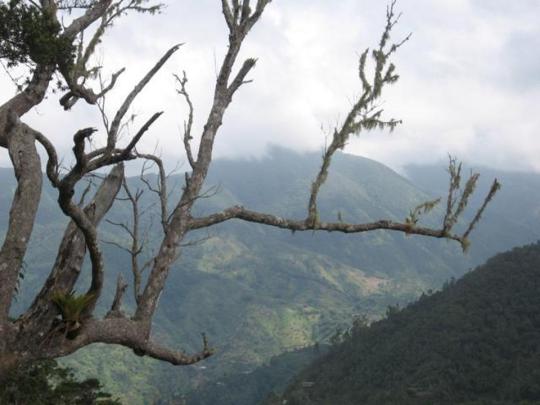
A white couple, clearly American, wearing brightly coloured Hawaiian shirts, stand in front of a statue of Bob Marley, having their picture taken by a local. They are grinning idiotically with hands upraised in a victory sign. We walk back to the jeep wordlessly. Bob Marley’s voice blares out of the speakers as we drive towards the beach. Fittingly, the song is Trenchtown Rock, penned in the early seventies while he was living in the ghetto with his mother.In the Third World, especially where liberation struggles were underway, Bob was seen as both a popular musician and a revolutionary ally. When Zimbabwe won its freedom from the white Rhodesian regime in 1980, the Wailers played at the independence celebration. Nesta, as he is affectionately known to his legions of fans, succumbed to a malignant strain of cancer while at the peak of his career and passed away at the age of 36 on May 11, 1981. It is nearing sunset when we arrive at the beach. We sit on the white sand at the water’s edge and gaze at the setting sun, a perfect orb on the pink horizon shot through with streaks of gold and scarlet. I close my eyes and drift away to the sound of the water lapping at my feet.Follow more stories on Facebook and TwitterAt Hindustan Times, we help you stay up-to-date with latest trends and products. Hindustan Times has affiliate partnership, so we may get a part of the revenue when you make a purchase. Source link Read the full article
0 notes
Text
The Caribbean's ‘double standard’ on the enforcement of COVID-19 protocols
New Post has been published on http://khalilhumam.com/the-caribbeans-double-standard-on-the-enforcement-of-covid-19-protocols/
The Caribbean's ‘double standard’ on the enforcement of COVID-19 protocols
‘These laws should be across the board’
Screenshot of the introductory section of Trinidad and Tobago's Public Health Regulations, 2020, as they relate to COVID-19.
Across the Caribbean, the COVID-19 pandemic has widened the gap of social inequity — including the various treatments of citizens who flout safety regulations. In Trinidad and Tobago, COVID-19 restrictions should apply to everyone, but several recent instances reveal a stark difference in the way police regulate violations depending on class and status. Based on updated public health ordinances, authorities prohibit public gatherings of more than five people, and face coverings and physical distancing are required. Yet, at a birthday party with over 20 guests at a communal pool area at Bayside Towers, an upscale residential high-rise, no one wore masks. The property managers reportedly asked attendees several times to comply with the COVID-19 protocols; when the guests refused, they called the police and advised them as such. By the time officers arrived, the few remaining guests got off with a warning, despite the fact that they breached several public health ordinance violations, including being in a public pool for recreational purposes, and failure to social distance or wear face masks. The consequences of not adhering to these safety requirements involve hefty fines and possible imprisonment for up to three days. The loophole, according to Commissioner of Police Gary Griffith, appeared to be that although the gathering was in a common area, the property itself is private — a rationale that did not go over well with social media users who accused law enforcement of perpetuating a double standard when it comes to the enforcement of COVID-19 regulations. Back in April, under similar public health ordinance guidelines, police detained 27 youth — many of them minors — who were congregating in larger groups than was allowed in the low-income community of Sea Lots. A video showing police making the group lie on their stomachs on a rocky beach and apologise to Griffith as guns were trained on them, went viral. Compounding the issue was Griffith's apparent backpedaling on statements he made in April, when he claimed the police had the authority to stop house parties. The Bayside pool party, he said, was a “gray area,” suggesting that there needs to be clarification on what defines a private and public space. Opposition Minister of Parliament Dinesh Rambally expressed support for Griffith, calling the legislation itself “vague, uncertain and imprecise.” This, he maintained, leads to arbitrary and inequitable enforcement. While Minister of Health Terrence Deyalsingh confirmed that the existing regulations “more or less speak to public spaces,” he added, “We don't need a constitutional argument to tell people that how you conduct yourselves in your private premises will capsize the whole thing.” In a post at Wired868, Lasana Liburd called out the hypocrisy of it:
Commissioner of Police Gary Griffith tried to turn the table on persons critical of the Trinidad and Tobago Police Service’s handling of a pool party in Bayside Towers, by suggesting that they were the ones with a ‘hang-up’ on race and class—and not his lawmen. […] Nobody was charged, although the public health ordinance carries a TT$1,000 fine [US$148)] for failure to wear masks — even if it is in your own vehicle alongside a single family member. To date, the TTPS has charged 179 persons for failure to wear masks. So […] did the police choose not to hold someone accountable at Bayside Towers because it is an affluent neighbourhood?
Griffith noted that under his leadership, the TTPS has conducted raids in affluent areas as proof that he was above bias. At a press conference, however, one journalist questioned why the police visit to Bayside wasn't filmed and uploaded to social media by the TTPS when other raids had. Griffith admonished the media for “nitpicking.” When members of the media persisted, Griffith replied that he did not have the details of what happened, but that investigations were continuing. He also said that some of the guests may not have been Trinidad and Tobago nationals and that the police would check their documentation. Media outlet Wired868, however, scoffed at the attempt to reframe the issue:
Griffith did not explain why the deportation of Venezuelan refugees — whose reason for being at the Bayside Towers event is uncertain — might be considered a suitable response to an arrogant, reckless Bayside resident’s failure to show due consideration to COVID-19 regulation.
On Facebook, Ian Y. Dass echoed similar sentiments:
So let me get this straight… A party with 40 persons at Bayside Towers is not a breach of the public health ordinance because it's in private property. I'm pretty sure all these persons aren't living under the same roof. And I'm pretty sure they will be mingling with the public at some point in the near future. Meanwhile, if a family who lives in the same house is seen in their PRIVATE vehicles not wearing masks, they get charged $1000 (inclusive of children over the age of 8). Make. It. Make. Sense. You see, I have no problem with there being laws in place to help reduce the spread of the virus. BUT…these laws should be ACROSS THE BOARD. I guess in sweet T&T, some are above the law. Injustice and unfairness in big daylight. Right in front we eyes. But we like it so.
The memes and spoofs were quick in coming, but underneath it all, social media users were well-aware of the gravity of the issue, underscored by another incident in which a young woman claimed that the legislation — which deems it an offence to “be found at or in any beach […] or similar body of water” — doesn't apply to her or her family because they are on their “private” property. Private beaches do not exist in Trinidad and Tobago. Even though COVID-19 regulations differ throughout the Caribbean, scenarios like these have been playing out in comparable ways. In Jamaica, social media erupted after superstar athlete Usain Bolt celebrated his birthday by throwing a large party on August 21. Event videos showed little regard for Jamaica's COVID-19 protocols, but weeks later, police confirmed that Bolt had received a permit. Authorities are, however, still waiting to hear whether several high-profile guests who had arrived from overseas to attend the party adhered to the required quarantine protocols upon their arrival. The government has already said that Bolt will not receive any special treatment, and investigations are continuing into possible breaches of the country's Quarantine Act. Jamaica, like Trinidad and Tobago, is currently experiencing community spread, and government officials continue to review and update COVID-19 protocols as required, through amendments to the Disaster Risk Management Act, which are gazetted in parliament. Three days after the party, Bolt tested positive for COVID-19, forcing several of his guests into quarantine themselves. Jamaica is a popular destination for celebrity visitors. Pop icon Madonna and her entourage arrive during the pandemic to celebrate her 62nd birthday. Videos and photos posted on social media showed that although the birthday party was held outdoors, guests did not adhere to social distancing or mask-wearing. On the other hand, with case numbers rising, Jamaican police have arrested several citizens for not wearing masks in public places. On September 1, several young men were stopped in the busy Half Way Tree area of Kingston — actions that are now being questioned by some lawyers, since — unlike Trinidad and Tobago — public safety measures like mask wearing have not been passed into law, but are recommendations. However, Jamaica's Minister of Health and Wellness, Dr. Christopher Tufton, has made it clear that fines of up to a million Jamaican dollars (just under seven thousand US dollars) or six months imprisonment can be imposed on those who defy COVID-19 protocols.
Written by Janine Mendes-Franco, Emma Lewis
0 notes
Text
Official Data Shows That The COVID-19 Death Rate Is Twice As High In The Poorest Areas Of England And Wales
The COVID-19 death rate in the most deprived areas of England and Wales is double that of more affluent places, new data published by the Office for National Statistics (ONS) has revealed.
The research shows that in the most deprived areas of England, the death rate was 55.1 deaths per 100,000 population compared with 25.3 deaths per 100,000 population in the least deprived areas.
The death rate progressively rises from the least deprived area to the most deprived places, according to the ONS figures.
Data for Wales revealed a similar trend: the most deprived areas had a mortality rate of 44.6 deaths per 100,000 population, almost twice as high as better off places where the rate was 23.2 deaths per 100,000 population.
Nick Stripe, head of health analysis at the ONS, said the gap in the death rate between poorer and richer parts of the country due to COVID-19 was even wider than is normally seen.
“People living in more deprived areas have experienced COVID-19 mortality rates more than double those living in less deprived areas,” he said, adding “general mortality rates are normally higher in more deprived areas, but so far COVID-19 appears to be taking them higher still”.
Deprivation levels were based on the index of multiple deprivation, which measures deprivation based on a range of factors such as income, employment, health, education, crime, the living environment and access to housing.
According to 2019 data, the most recent available index, Middlesbrough, Liverpool, Knowsley, Hull and Manchester have the highest proportions of neighbourhoods among the most deprived in England.
The index also shows that seven of the 10 local authority districts with the highest levels of income deprivation among older people are in London.
Between March and April 17 2020, there were 90,232 deaths in England and Wales, with 20,283 of these deaths involving the coronavirus. The vast majority of these deaths are of older people.
The data uses a metric called age-standardised mortality rates to allow comparisons between populations that may contain different proportions of people of different ages.
London has the highest age-standardised mortality rate with 85.7 deaths per 100,000 persons involving COVID-19, almost double the next highest rate, according to the ONS.
And local authorities with the highest age-standardised mortality rates are all London boroughs: Newham had the highest age-standardised rate with 144.3 deaths per 100,000 population followed by Brent with a rate of 141.5 deaths per 100,000 population and Hackney with a rate of 127.4 deaths per 100,000 population.
Diana Johnson, the Labour MP for Kingston Upon Hull North, said that while she was very aware of the impact that deprivation had on life expectancy, the difference in COVID mortality rates was “shocking.”
“This is something that I’m sure scientists and doctors and researchers are going to be looking at for a long time, but clearly, there is something in it,” she told BuzzFeed News.
“These figures are pretty stark, in that if you’re poor if you live in a deprived neighborhood, you are more like you twice as likely I think from those figures to die, which is, is very stark,” she added.
While she said more research was needed to find out exactly what was behind the differences in mortality rates, she said it was clear that “there’s something that you’re most susceptible to, the poorer and more deprived a community you come from to, to succumb to COVID-19”.
Johnson suggested that one factor likely to be driving the discrepancy in mortality rates may be existing health inequalities in poor communities.
“The doctors keep telling us that if you have a pre-existing condition, then that’s more of a problem for you fighting off COVID,” she said, “and I know in my constituency, people with chronic conditions tend to get them earlier.”
Johnson said that relatively high levels of smoking leading to respiratory issues, more people developing coronary problems at a younger age, and higher rates of obesity were all factors in the deprived communities that she represents.
“These are factors that we know generally can affect your ability to shake off diseases,” she said. “And they’re obviously having quite a dramatic effect on COVID.”
Johnson suggested that the government should also consider the impact of deprivation alongside its inquiry into why coronavirus is disproportionately affecting black and ethnic minority communities in the UK. “Perhaps now [they need] to be widening that out and looking at deprivation as well,” she said.
“I think for communities that are deprived, and also BAME communities, and often there’s quite a lot of overlap there, I think the government really need to look at that,” she added.
Chris Thomas, a researcher at the think tank IPPR, said that disproportionately severe cuts to public health services in areas that rank highest for deprivation may have impacted their resilience to the virus.
Public interventions that have been sharply reduced in those areas — including anti-smoking campaigns, measures to reduce obesity and sexual health clinics — were designed to prevent the type of underlying health conditions that experts now say put people at most risk of becoming seriously ill with COVID-19.
“Services designed to keep people in good health were cut by far the hardest in the most deprived local authority areas,” Thomas said.
Alison Garnham, the chief executive of charity Child Poverty Action Group told BuzzFeed News: “The link between poverty and poorer health is well-established, so it comes as no surprise that deprived communities have worse outcomes when the country is battling the COVID-19 pandemic.
“This finding makes it even more important that government measures to support people financially should focus particularly on those who were already struggling to make ends meet before the pandemic struck.”
She called on on ministers to provide more support to families with children by increasing child benefit by £10 per child per week.
The ONS also found that the death rate was much higher in urban than rural areas with the highest death rate in “major towns and cities” where the death rate is 64.3 per 100,000 population.
Source link
قالب وردپرس
from World Wide News https://ift.tt/2LGmswx
0 notes
Text
Londons Always Been Violent But Now Its Surpassed New York
The first punch snapped my head back with such force I thought my skull had become dislodged from my spine. And then more skinheads, sweaty after their exertions on the dance floor, streamed out of the pub, encircling me so that their odor mingled with their snarling rage. A couple more punches gave way to a fusillade of blows that knocked me to the filthy, gum encrusted sidewalk. And then the real brutality began.
Precision punches gave way to kicks as highly polished steel-toe-capped Dr Marten boots sought out my face and the back of my head. Suddenly, as my front teeth audibly snapped, I tasted blood mingled with Guinness, my half empty glass still on the bar before trouble started.
I still can’t be sure what started the melee, but I think it was when a young skinhead bounced into me off the dance floor and I reflexively put my arm up to protect my beer from being spilled, an act that was seen as an act of aggression against a pack of skinheads who had taken over the pub and the dance floor at the Laurel Tree in Camden Town, north London, a familiar after hours spot.
I’d run outside to avoid “a glassing”—a common act in London pubs of the late ’90s whereby a pint glass is smashed in half and the base and its jagged edges are ground into the unfortunate victim’s face. I avoided that fate, but I was kicked into unconsciousness before the skinheads withdrew.
A few minutes later, a buddy, also attacked but not as badly, dragged my limp form to its feet, my face a mask of blood, as I struggled to regain consciousness. A routine police van driving past slowed to a crawl as one of the cops, with the sliding door wide open, shouted out cheerily, “Is your mate all right?” My buddy struggling to hold me up replied, “Yup, he’ll be fine!” And with that the cops gave a friendly salute and drove off. I made it to the hospital at around 3 a.m.
This was my London in 1995. So the April 1 news from London—that for the first time the city has a higher murder rate than New York, with a rash of gang-related stabbings and drive-by shootings over crack-cocaine and petty sleights on social media largely occurring in my old neighborhood of Hackney—was no surprise to me. Violence has always bubbled under London’s seemingly genteel surface.
In the ’90s, pub and street violence were a daily part of our lives if you were a male between 16 and 29, with half of the country’s assaults taking place in and around pubs on men in that age group. The perpetrators were proud of the violence, a fact I discovered after some brain scans and reconstructive dental work when I found a small piece of paper that had been stuffed into the top pocket of my leather jacket: “You just met the West Ham Inter City Firm.” The skinheads were aligned with the east London football club West Ham.
Often the violence was centered around football teams and could erupt in any part of London, rich or poor. I got used to leaving my flat in Finsbury Park on Sunday morning to get the newspapers to find the landlord of the pub next door hosing broken glass and blood into the gutter after Arsenal fans had a “tear up” with Chelsea.
In 2002 I moved to a walk-up apartment in the East Village, New York City some three thousand miles from my flat in North London, despite the protestations of some family members who had been raised on American cop shows and movies like The Warriors who thought I was going to live in one of the most dangerous cities in the world.
Instead, I found Manhattan startling in its peacefulness and civility. New Yorkers sipping vodka martinis were astonished when I told them of my daily experiences in London pubs, where we formed a scrum at the bar, fighting for the bartenders’ attention and violence could explode at any second. New Yorkers in contrast said please and thank you and excuse me when they bumped into you on the street, which caused me to do a double-take. And I never felt threatened walking the streets of Manhattan at 3 a.m., unlike London where I was once robbed at knifepoint doing exactly that.
“There is no doubt that the brutal history of the crack-cocaine epidemic in New York will also be visited on London.”
In fact, the only trace of hostility I experienced in New York was when my girlfriend dragged me to an improv poetry performance in a warehouse in Chelsea which comprised a woman dressed all in black reading a few stanzas of poorly written slam-poetry before ululating and screeching into a microphone for ten minutes at a time, before returning to two more badly-written lines of verse. When an urbane hipster asked me excitedly what I thought, pushing his oversize plastic-rimmed glasses up his nose, I demurred, saying I failed to see the artistic merit. “Oh-mi-god,” he snorted, crossing his legs fussily. “You Brits are so goddamn literal.”
I felt like a barbarian from a strange land, but I fell in love with New York City and its refinement, decorum, and elegance.
For years I set out on journalistic assignments like illegal gold-mining encampments in Africa, or weeks with a bounty hunter in south Central Los Angeles, and returned from the fray and the craziness of the outside world, to the sophistication and pacific calm of Manhattan where I felt safe.
But I was living in a bubble. When I embarked on my book, Sex Money Murder: A Story of Crack, Blood and Betrayal, about one of the Bronx’s most dangerous gangs and the deadly hold they had in the housing projects in the ’80s and ’90s, I was totally shocked to discover a racially segregated world and a level of poverty that rivaled much of what I had seen in the favelas of Brazil or the garrisons of Kingston, Jamaica but right in the city I loved. The island of Manhattan where I had been living was quite unlike the world I experienced across the Harlem River in the Bronx. Crack cocaine and a growing army of young men flocking to the Bloods was a stark contrast to the wealthy elite I had mingled with on the upper east side.
Of course, it could be that I moved from one of London’s poorest boroughs to one of New York’s most gentrified on the edges of Alphabet City. But as London faces significant challenges in the months ahead, there is no doubt that the brutal history of the crack-cocaine epidemic in New York will also be visited on London. Just like the Big Apple, London has densely populated government-funded public housing complexes that have become incubators for violent crime, the same as the ones in the Bronx that were so badly affected in the ’90s and continue to struggle to this day.
Now when I return to London, I see a city that has been hollowed out, with the affluent central areas around Paddington or Chelsea and Kensington taken over by wealthy Russian oligarchs who have bought all the expensive real estate, sending rents through the roof, while the local pubs and restaurants close due to a lack of customers.
London increasingly resembles New York, as disaffected youngsters form street gangs on the tough housing estates of Tottenham, north London, and begin the familiar retributive cycle of murder that denotes gang life in New York. Globalization and the growing rift between the rich and the poor, and the acute alienation and disenfranchisement of our inner-city youth, now fashions London, New York, and the world’s big cities into an eerie simulacrum of one another.
from All Of Beer http://allofbeer.com/londons-always-been-violent-but-now-its-surpassed-new-york/ from All of Beer https://allofbeercom.tumblr.com/post/184170088477
0 notes
Text
Londons Always Been Violent But Now Its Surpassed New York
The first punch snapped my head back with such force I thought my skull had become dislodged from my spine. And then more skinheads, sweaty after their exertions on the dance floor, streamed out of the pub, encircling me so that their odor mingled with their snarling rage. A couple more punches gave way to a fusillade of blows that knocked me to the filthy, gum encrusted sidewalk. And then the real brutality began.
Precision punches gave way to kicks as highly polished steel-toe-capped Dr Marten boots sought out my face and the back of my head. Suddenly, as my front teeth audibly snapped, I tasted blood mingled with Guinness, my half empty glass still on the bar before trouble started.
I still can’t be sure what started the melee, but I think it was when a young skinhead bounced into me off the dance floor and I reflexively put my arm up to protect my beer from being spilled, an act that was seen as an act of aggression against a pack of skinheads who had taken over the pub and the dance floor at the Laurel Tree in Camden Town, north London, a familiar after hours spot.
I’d run outside to avoid “a glassing”—a common act in London pubs of the late ’90s whereby a pint glass is smashed in half and the base and its jagged edges are ground into the unfortunate victim’s face. I avoided that fate, but I was kicked into unconsciousness before the skinheads withdrew.
A few minutes later, a buddy, also attacked but not as badly, dragged my limp form to its feet, my face a mask of blood, as I struggled to regain consciousness. A routine police van driving past slowed to a crawl as one of the cops, with the sliding door wide open, shouted out cheerily, “Is your mate all right?” My buddy struggling to hold me up replied, “Yup, he’ll be fine!” And with that the cops gave a friendly salute and drove off. I made it to the hospital at around 3 a.m.
This was my London in 1995. So the April 1 news from London—that for the first time the city has a higher murder rate than New York, with a rash of gang-related stabbings and drive-by shootings over crack-cocaine and petty sleights on social media largely occurring in my old neighborhood of Hackney—was no surprise to me. Violence has always bubbled under London’s seemingly genteel surface.
In the ’90s, pub and street violence were a daily part of our lives if you were a male between 16 and 29, with half of the country’s assaults taking place in and around pubs on men in that age group. The perpetrators were proud of the violence, a fact I discovered after some brain scans and reconstructive dental work when I found a small piece of paper that had been stuffed into the top pocket of my leather jacket: “You just met the West Ham Inter City Firm.” The skinheads were aligned with the east London football club West Ham.
Often the violence was centered around football teams and could erupt in any part of London, rich or poor. I got used to leaving my flat in Finsbury Park on Sunday morning to get the newspapers to find the landlord of the pub next door hosing broken glass and blood into the gutter after Arsenal fans had a “tear up” with Chelsea.
In 2002 I moved to a walk-up apartment in the East Village, New York City some three thousand miles from my flat in North London, despite the protestations of some family members who had been raised on American cop shows and movies like The Warriors who thought I was going to live in one of the most dangerous cities in the world.
Instead, I found Manhattan startling in its peacefulness and civility. New Yorkers sipping vodka martinis were astonished when I told them of my daily experiences in London pubs, where we formed a scrum at the bar, fighting for the bartenders’ attention and violence could explode at any second. New Yorkers in contrast said please and thank you and excuse me when they bumped into you on the street, which caused me to do a double-take. And I never felt threatened walking the streets of Manhattan at 3 a.m., unlike London where I was once robbed at knifepoint doing exactly that.
“There is no doubt that the brutal history of the crack-cocaine epidemic in New York will also be visited on London.”
In fact, the only trace of hostility I experienced in New York was when my girlfriend dragged me to an improv poetry performance in a warehouse in Chelsea which comprised a woman dressed all in black reading a few stanzas of poorly written slam-poetry before ululating and screeching into a microphone for ten minutes at a time, before returning to two more badly-written lines of verse. When an urbane hipster asked me excitedly what I thought, pushing his oversize plastic-rimmed glasses up his nose, I demurred, saying I failed to see the artistic merit. “Oh-mi-god,” he snorted, crossing his legs fussily. “You Brits are so goddamn literal.”
I felt like a barbarian from a strange land, but I fell in love with New York City and its refinement, decorum, and elegance.
For years I set out on journalistic assignments like illegal gold-mining encampments in Africa, or weeks with a bounty hunter in south Central Los Angeles, and returned from the fray and the craziness of the outside world, to the sophistication and pacific calm of Manhattan where I felt safe.
But I was living in a bubble. When I embarked on my book, Sex Money Murder: A Story of Crack, Blood and Betrayal, about one of the Bronx’s most dangerous gangs and the deadly hold they had in the housing projects in the ’80s and ’90s, I was totally shocked to discover a racially segregated world and a level of poverty that rivaled much of what I had seen in the favelas of Brazil or the garrisons of Kingston, Jamaica but right in the city I loved. The island of Manhattan where I had been living was quite unlike the world I experienced across the Harlem River in the Bronx. Crack cocaine and a growing army of young men flocking to the Bloods was a stark contrast to the wealthy elite I had mingled with on the upper east side.
Of course, it could be that I moved from one of London’s poorest boroughs to one of New York’s most gentrified on the edges of Alphabet City. But as London faces significant challenges in the months ahead, there is no doubt that the brutal history of the crack-cocaine epidemic in New York will also be visited on London. Just like the Big Apple, London has densely populated government-funded public housing complexes that have become incubators for violent crime, the same as the ones in the Bronx that were so badly affected in the ’90s and continue to struggle to this day.
Now when I return to London, I see a city that has been hollowed out, with the affluent central areas around Paddington or Chelsea and Kensington taken over by wealthy Russian oligarchs who have bought all the expensive real estate, sending rents through the roof, while the local pubs and restaurants close due to a lack of customers.
London increasingly resembles New York, as disaffected youngsters form street gangs on the tough housing estates of Tottenham, north London, and begin the familiar retributive cycle of murder that denotes gang life in New York. Globalization and the growing rift between the rich and the poor, and the acute alienation and disenfranchisement of our inner-city youth, now fashions London, New York, and the world’s big cities into an eerie simulacrum of one another.
Source: http://allofbeer.com/londons-always-been-violent-but-now-its-surpassed-new-york/
from All of Beer https://allofbeer.wordpress.com/2019/04/14/londons-always-been-violent-but-now-its-surpassed-new-york/
0 notes
Text
Londons Always Been Violent But Now Its Surpassed New York
The first punch snapped my head back with such force I thought my skull had become dislodged from my spine. And then more skinheads, sweaty after their exertions on the dance floor, streamed out of the pub, encircling me so that their odor mingled with their snarling rage. A couple more punches gave way to a fusillade of blows that knocked me to the filthy, gum encrusted sidewalk. And then the real brutality began.
Precision punches gave way to kicks as highly polished steel-toe-capped Dr Marten boots sought out my face and the back of my head. Suddenly, as my front teeth audibly snapped, I tasted blood mingled with Guinness, my half empty glass still on the bar before trouble started.
I still can’t be sure what started the melee, but I think it was when a young skinhead bounced into me off the dance floor and I reflexively put my arm up to protect my beer from being spilled, an act that was seen as an act of aggression against a pack of skinheads who had taken over the pub and the dance floor at the Laurel Tree in Camden Town, north London, a familiar after hours spot.
I’d run outside to avoid “a glassing”—a common act in London pubs of the late ’90s whereby a pint glass is smashed in half and the base and its jagged edges are ground into the unfortunate victim’s face. I avoided that fate, but I was kicked into unconsciousness before the skinheads withdrew.
A few minutes later, a buddy, also attacked but not as badly, dragged my limp form to its feet, my face a mask of blood, as I struggled to regain consciousness. A routine police van driving past slowed to a crawl as one of the cops, with the sliding door wide open, shouted out cheerily, “Is your mate all right?” My buddy struggling to hold me up replied, “Yup, he’ll be fine!” And with that the cops gave a friendly salute and drove off. I made it to the hospital at around 3 a.m.
This was my London in 1995. So the April 1 news from London—that for the first time the city has a higher murder rate than New York, with a rash of gang-related stabbings and drive-by shootings over crack-cocaine and petty sleights on social media largely occurring in my old neighborhood of Hackney—was no surprise to me. Violence has always bubbled under London’s seemingly genteel surface.
In the ’90s, pub and street violence were a daily part of our lives if you were a male between 16 and 29, with half of the country’s assaults taking place in and around pubs on men in that age group. The perpetrators were proud of the violence, a fact I discovered after some brain scans and reconstructive dental work when I found a small piece of paper that had been stuffed into the top pocket of my leather jacket: “You just met the West Ham Inter City Firm.” The skinheads were aligned with the east London football club West Ham.
Often the violence was centered around football teams and could erupt in any part of London, rich or poor. I got used to leaving my flat in Finsbury Park on Sunday morning to get the newspapers to find the landlord of the pub next door hosing broken glass and blood into the gutter after Arsenal fans had a “tear up” with Chelsea.
In 2002 I moved to a walk-up apartment in the East Village, New York City some three thousand miles from my flat in North London, despite the protestations of some family members who had been raised on American cop shows and movies like The Warriors who thought I was going to live in one of the most dangerous cities in the world.
Instead, I found Manhattan startling in its peacefulness and civility. New Yorkers sipping vodka martinis were astonished when I told them of my daily experiences in London pubs, where we formed a scrum at the bar, fighting for the bartenders’ attention and violence could explode at any second. New Yorkers in contrast said please and thank you and excuse me when they bumped into you on the street, which caused me to do a double-take. And I never felt threatened walking the streets of Manhattan at 3 a.m., unlike London where I was once robbed at knifepoint doing exactly that.
“There is no doubt that the brutal history of the crack-cocaine epidemic in New York will also be visited on London.”
In fact, the only trace of hostility I experienced in New York was when my girlfriend dragged me to an improv poetry performance in a warehouse in Chelsea which comprised a woman dressed all in black reading a few stanzas of poorly written slam-poetry before ululating and screeching into a microphone for ten minutes at a time, before returning to two more badly-written lines of verse. When an urbane hipster asked me excitedly what I thought, pushing his oversize plastic-rimmed glasses up his nose, I demurred, saying I failed to see the artistic merit. “Oh-mi-god,” he snorted, crossing his legs fussily. “You Brits are so goddamn literal.”
I felt like a barbarian from a strange land, but I fell in love with New York City and its refinement, decorum, and elegance.
For years I set out on journalistic assignments like illegal gold-mining encampments in Africa, or weeks with a bounty hunter in south Central Los Angeles, and returned from the fray and the craziness of the outside world, to the sophistication and pacific calm of Manhattan where I felt safe.
But I was living in a bubble. When I embarked on my book, Sex Money Murder: A Story of Crack, Blood and Betrayal, about one of the Bronx’s most dangerous gangs and the deadly hold they had in the housing projects in the ’80s and ’90s, I was totally shocked to discover a racially segregated world and a level of poverty that rivaled much of what I had seen in the favelas of Brazil or the garrisons of Kingston, Jamaica but right in the city I loved. The island of Manhattan where I had been living was quite unlike the world I experienced across the Harlem River in the Bronx. Crack cocaine and a growing army of young men flocking to the Bloods was a stark contrast to the wealthy elite I had mingled with on the upper east side.
Of course, it could be that I moved from one of London’s poorest boroughs to one of New York’s most gentrified on the edges of Alphabet City. But as London faces significant challenges in the months ahead, there is no doubt that the brutal history of the crack-cocaine epidemic in New York will also be visited on London. Just like the Big Apple, London has densely populated government-funded public housing complexes that have become incubators for violent crime, the same as the ones in the Bronx that were so badly affected in the ’90s and continue to struggle to this day.
Now when I return to London, I see a city that has been hollowed out, with the affluent central areas around Paddington or Chelsea and Kensington taken over by wealthy Russian oligarchs who have bought all the expensive real estate, sending rents through the roof, while the local pubs and restaurants close due to a lack of customers.
London increasingly resembles New York, as disaffected youngsters form street gangs on the tough housing estates of Tottenham, north London, and begin the familiar retributive cycle of murder that denotes gang life in New York. Globalization and the growing rift between the rich and the poor, and the acute alienation and disenfranchisement of our inner-city youth, now fashions London, New York, and the world’s big cities into an eerie simulacrum of one another.
from All Of Beer http://allofbeer.com/londons-always-been-violent-but-now-its-surpassed-new-york/
0 notes
Text
London crime rise MAP: The London boroughs with largest criminal activity increase | UK | News
http://www.internetunleashed.co.uk/?p=24635 London crime rise MAP: The London boroughs with largest criminal activity increase | UK | News - http://www.internetunleashed.co.uk/?p=24635 The Mayor of London, Sadiq Khan, is under pressure to get a grip of policing London and tackle the crime epidemic.Now, a new map of the city drawn up by London Criminal Defence Solicitors, Lawtons, draws attention the areas of the capital under increasing pressure from criminal activity.The affluent area of Richmond-Upon-Thames - home to the likes of TV presenter David Attenborough and actor Tom Hardy as well as the English dwelling of Hollywood royalty Brad Pitt and Angelina Jolie - saw the largest increase over the 12 months leading up to May this year, with crime rising a steep 13.85 percent in the borough.Other parts of the city previously considered ‘safe’ have also seen major increases in lawbreaking.Kensington and Chelsea and the borough of Sutton saw crime rise eight percent and 7.5 percent respectively.Harrow (11.05 percent), Redbridge (10.99 percent), and Kingston-Upon-Thames (10.98 percent) also saw large rises in wrongdoing.The crime crisis has led to demands from campaigners dissatisfied with the record of Mr Khan and the Government to do more to address the problem facing Londoners.Norman Brennan, a retired police officer and lead campaigner on law and order, told Express.co.uk earlier this month both the Mayor of London and Theresa May were “pleading with the police” to increase their use of stop and search powers despite both demanding a curb on the practice back in 2015.He added: “When you look at a lot of the attacks, they’re not just in notorious areas such as Harringay and Croydon."We’ve had attacks in Notting Hill and Kensington and these are very salubrious areas."These are the types of places tourists enjoy visiting as part of their round London trip.“If they think there’s a part of London that is at risk they won’t travel there.”Statistics from the Met Police highlight “violent crime against the person” has dramatically increased over the yearly period.The criminal classification, which includes murder and use of an offensive weapon, saw a rise of 5.3 percent.Mr Khan has admitted efforts to tackle the level of crime in London have been “not good enough” but he has blamed Government funding cuts for the rise.Writing in the Independent last week, he said: “Despite my best efforts, within the rules and constraints set by the Government, it is simply impossible to make up the £1billion in savings the Met have been forced to make since 2010.“The £140million we have invested from City Hall in the last two years dwarfs the amount the previous mayor was willing to give the Met, but it’s still a fraction of what’s needed.”Taking aim at Theresa May and the new Home Secretary, Sajid Javid, he added: “We do need leadership from the top – an absent Home Secretary and a Prime Minister distracted by Brexit need to wake up to what is happening across our country.”His comments came in response to an attack from former London Mayor Boris Johnson who accused his successor for failing to take responsibility for the rising crime.In his regular Telegraph column, Mr Johnson said: “He blames funding (when he was left with a large war chest by me); he blames the Tory Government; he blames society.“He blames everyone but himself, when it is his paramount duty to keep Londoners safe.“It is a pathetic performance.” Source link
0 notes
Text
The New Unions And Parties
====New unions and parties====
The rise of [[nationalism]], as distinct from island identification or desire for [[self-determination]], is generally dated to the [[British West Indian labour unrest of 1934–1939|1938 labour riots]] that affected both Jamaica and the islands of the Eastern Caribbean. [[William Alexander Bustamante]], a moneylender in the capital city of [[Kingston, Jamaica|Kingston]] who had formed the Jamaica Trade Workers and Tradesmen Union (JTWTU) three years earlier, captured the imagination of the black masses with his messianic personality, even though he himself was light-skinned, affluent, and aristocratic. Bustamante emerged from the 1938 strikes and other disturbances as a populist leader and the principal spokesperson for the militant urban working class, and in that year, using the JTWTU as a stepping stone, he founded the [[Bustamante Industrial Trade Union]] (BITU), which inaugurated Jamaica's workers movement.
A distant cousin of Bustamante's, [[Norman Manley|Norman W. Manley]], concluded as a result of the 1938 riots that the real basis for national unity in Jamaica lay in the masses. Unlike the union-oriented Bustamante, however, Manley was more interested in access to control over [[Power (social and political)|state power]] and [[political rights]] for the masses. On 18 September 1938, he inaugurated the [[People's National Party]] (PNP), which had begun as a nationalist movement supported by the mixed-race middle class and the liberal sector of the business community with leaders who were highly educated members of the [[upper middle class]]. The 1938 riots spurred the PNP to [[Trade union|unionise labour]], although it would be several years before the PNP formed major labour unions. The party concentrated its earliest efforts on establishing a network both in urban areas and in banana-growing rural [[Parishes of Jamaica|parishes]], later working on building support among small farmers and in areas of bauxite mining.
The PNP adopted a [[socialist]] ideology in 1940 and later joined the [[Socialist International]], allying itself formally with the [[social democratic]] parties of [[Western Europe]]. Guided by socialist principles, Manley was not a doctrinaire socialist. PNP socialism during the 1940s was similar to [[British Labour Party]] ideas on state control of the factors of production, [[equality of opportunity]], and a [[welfare state]], although a left-wing element in the PNP held more orthodox [[Marxist]] views and worked for the internationalisation of the trade union movement through the Caribbean Labour Congress. In those formative years of Jamaican political and union activity, relations between Manley and Bustamante were cordial. Manley defended Bustamante in court against charges brought by the British for his labour activism in the 1938 riots and looked after the BITU during Bustamante's imprisonment.
Bustamante had political ambitions of his own, however. In 1942, while still incarcerated, he founded a political party to rival the PNP, called the [[Jamaica Labour Party]] (JLP). The new party, whose leaders were of a lower class than those of the PNP, was supported by conservative businessmen and 60,000 dues-paying BITU members, who encompassed dock and sugar plantation workers and other unskilled urban labourers. On his release in 1943, Bustamante began building up the JLP. Meanwhile, several PNP leaders organised the leftist-oriented Trade Union Congress (TUC). Thus, from an early stage in modern Jamaica, unionised labour was an integral part of organised political life.
For the next quarter century, Bustamante and Manley competed for centre stage in Jamaican political affairs, the former espousing the cause of the "barefoot man"; the latter, "democratic socialism," a loosely defined political and economic theory aimed at achieving a [[Classless society|classless]] system of government. Jamaica's two founding fathers projected quite different popular images. Bustamante, lacking even a [[high school diploma]], was an autocratic, charismatic, and highly adept politician; Manley was an athletic, [[University of Oxford|Oxford-trained]] lawyer, [[Rhodes Scholarship|Rhodes scholar]], humanist, and liberal intellectual. Although considerably more reserved than Bustamante, Manley was well liked and widely respected. He was also a visionary nationalist who became the driving force behind the crown colony's quest for independence.
Following the 1938 disturbances in the [[West Indies]], [[London]] sent the [[Report of West India Royal Commission (Moyne Report)|Moyne Commission]] to study conditions in the [[British West Indies|British Caribbean territories]]. Its findings led in the early 1940s to better wages and a new constitution. Issued on 20 November 1944, the [[Constitution of Jamaica|Constitution]] modified the crown colony system and inaugurated limited self-government based on the [[Westminster system|Westminster model of government]] and [[universal adult suffrage]]. It also embodied the island's principles of ministerial responsibility and the rule of law. Thirty-one percent of the population participated in the [[Jamaican general election, 1944|1944 elections]]. The JPL – helped by its promises to create jobs, its practice of dispensing public funds in pro-JLP parishes, and the PNP's relatively radical platform – won an 18 percent majority of the votes over the PNP, as well as 22 seats in the 32-member House of Representatives, with 5 going to the PNP and 5 to other short-lived parties. In 1945 Bustamante took office as Jamaica's first premier (the pre-independence title for [[Prime Minister of Jamaica|head of government]]).
Under the new charter, the British governor, assisted by the six-member Privy Council and ten-member Executive Council, remained responsible solely to the crown. The Jamaican Legislative Council became the upper house, or Senate, of the bicameral Parliament. House members were elected by adult suffrage from single-member electoral districts called constituencies. Despite these changes, ultimate power remained concentrated in the hands of the governor and other high officials.
0 notes
Text
17,645 teachers across London will lose their jobs by 2020
17,645 teachers across London will lose their jobs by 2020
By 2020, there will be a shocking 17,645 teacher job cuts across London boroughs The most deprived areas are being hit the hardest, such as Newham (1074), Tower Hamlets (891), and Southwark (808). Those least affected are those in more affluent areas, such as Richmond Upon Thames (249), Kingston Upon Thames (249), and Merton (204). It was reported earlier this year that London schools will face…
View On WordPress
0 notes
Text
Marilyn Monroe's Brentwood home for sale
The only home ever owned by Hollywood icon Marilyn Monroe, in the affluent Brentwood area of Los Angeles, is for sale with an asking price of US$6,900,000 (NZ$10 million). from http://www.stuff.co.nz/life-style/home-property/91956234/Marilyn-Monroes-Brentwood-home-for-sale from Chelsea Kingston's Blog http://chelseak85.blogspot.com/2017/04/marilyn-monroes-brentwood-home-for-sale.html
0 notes
Text
cheap flights to London from Buenos Aires
New Post has been published on http://londonflightscheap.com/cheap-flights-to-london-from-buenos-aires/
cheap flights to London from Buenos Aires
Are You Looking For cheap flights to London from Buenos Aires?
The Cheapest Round-trip Tickets from Buenos Aires to London
Departure date Return date Stops Airlines Find Ticket
30.03.2017
11.04.2017
Direct
Tickets from 1 120
29.07.2017
19.08.2017
1 stop
Tickets from 1 117
30.03.2017
11.04.2017
2 stops
Tickets from 1 130
The Cheapest Flights for this Month from Buenos Aires to London
Departure date Return date Stops Airlines Find Ticket
30.01.2017
10.02.2017
2 stops
Tickets from 1 187
The Cheapest Flights from Buenos Aires to London for the Year Ahead
Departure date Return date Stops Airlines Find Ticket
30.01.2017
10.02.2017
2 stops
Tickets from 1 187
10.02.2017
10.03.2017
1 stop
Tickets from 1 176
30.03.2017
11.04.2017
Direct
Tickets from 1 120
29.06.2017
13.07.2017
1 stop
Tickets from 1 320
29.07.2017
19.08.2017
1 stop
Tickets from 1 117
Direct Flights from Buenos Aires to London
Departure date Return date Airlines Find Ticket
04.02.2017
19.02.2017
Tickets from 2 499
16.03.2017
31.03.2017
Tickets from 1 397
About Buenos Aires : Buenos Aires is Argentina’s big, cosmopolitan capital city. Its center is the Plaza de Mayo, lined with stately 19th-century buildings including Casa Rosada, the iconic, balconied presidential palace. Other major attractions include Teatro Colón, a grand 1908 opera house with nearly 2,500 seats, and the modern MALBA museum, displaying Latin American art.
About London : London, the capital of England and the United Kingdom, is a 21st-century city with the history stretching back to Roman times. At its center stand the imposing Houses of Parliament, the iconic ‘Big Ben’ clock tower and Westminster Abbey, site of British monarch coronations. Across the Thames River, the London Eye observation wheel provides panoramic views of the South Bank cultural complex and the entire city.
when you visit London you, of course, should see this ((Old Malden))
I recommended it to see
Old Malden is a ward of the Royal Borough of Kingston upon Thames in southwest London, 10 miles south west of Charing Cross. Along with Coombe and Kingston Vale it is one of the more affluent areas in the borough.
People who search for cheap flights to London from Buenos Aires also searches for:
cheap flights to london from buenos aires cheap flights london to buenos aires argentina cheap flights to London from Buenos cheap flights from london to buenos aires just the flight cheap flights to london from buenos ca cheap flights to london from buenos colorado cheap flights to london from buenos dias cheap flights to london from buenos easter cheap flights to london from buenos events cheap flights to london from buenos es cheap flights to london from buenos ga cheap flights to london from buenos georgia cheap flights to london from buenos habitos cheap flights to london from buenos hospital cheap flights to london from buenos kai cheap flights to london from buenos kaise cheap flights to london from buenos libros cheap flights to london from buenos los angeles cheap flights to london from buenos la cheap flights to london from buenos mo
0 notes